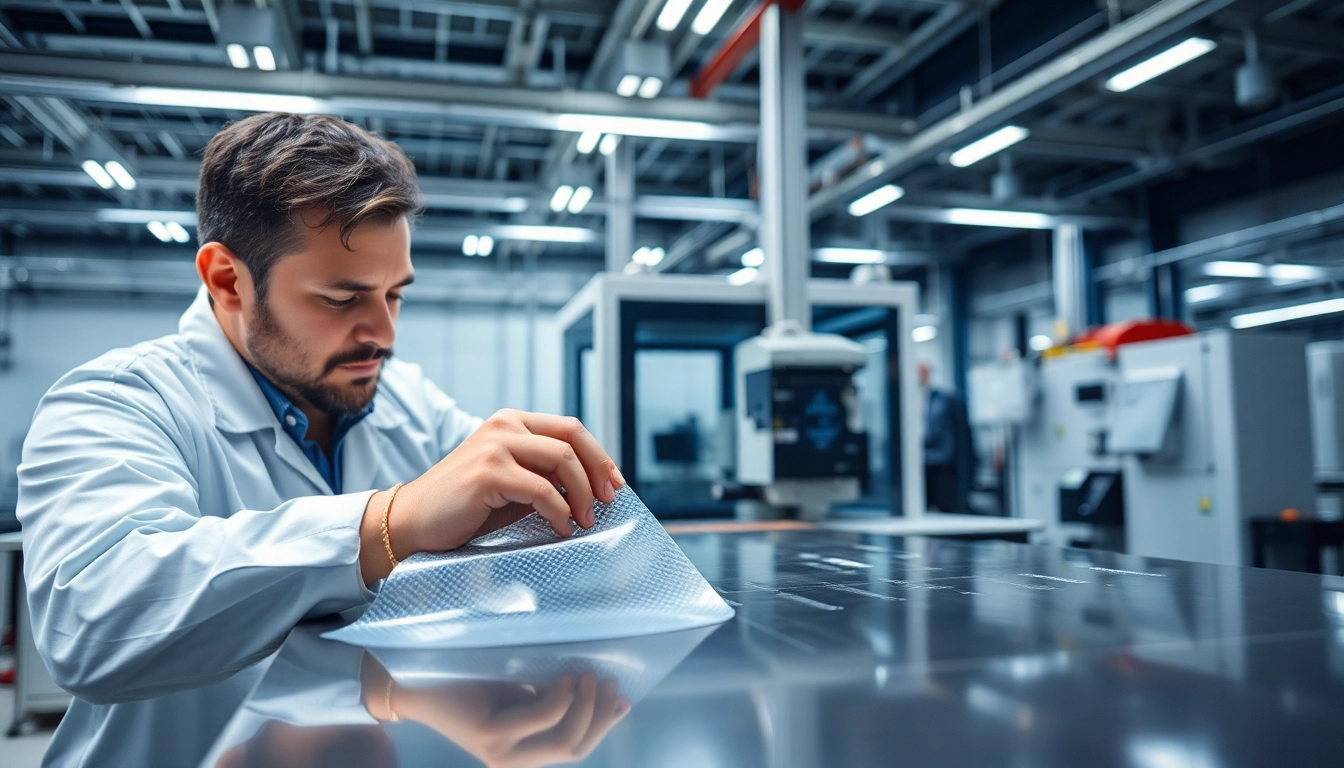Understanding Adhesive Films
Adhesive films represent a highly specialized form of bonding solutions, serving various industries with the precision and effectiveness needed for modern technology. These films are engineered to provide strong, clean bonds for materials, ensuring perfect adhesion in demanding environments. For anyone involved in construction, aerospace, automotive, or defense applications, the significance of utilizing high-performance adhesive should not be underestimated. They allow for advanced bonding techniques that improve durability and strength. To explore high-quality adhesive films in detail, visit https://www.makobond.com/adhesives-films.
What Are Adhesive Films?
Adhesive films are sheets of adhesive material that are designed to form bonds between surfaces within different applications. They come in a variety of formulations, typically allowing activation by heat and pressure, which is essential for their effectiveness. These films can serve as an alternative to traditional liquid adhesives, offering benefits such as easier handling and a cleaner application process. This method reduces the risk of mess associated with traditional adhesive applications, making it ideal for high-precision applications.
Types of Adhesive Films
There are numerous types of adhesive films available on the market, each catering to different needs and materials. Major categories include:
- Polymer Films: Excellent for bonding plastics and metals, these films are versatile and commonly used in industries such as automotive and aerospace.
- Epoxy Films: Known for their strong structural integrity, epoxy adhesive films are often utilized in circumstances requiring high-temperature resistance and exceptional mechanical properties.
- Thermoplastic Films: These films offer unique properties, such as reworkability when heated, making them suitable for manufacturing environments where changes may occur frequently.
- Conductive Films: Specialized for electronic applications, conductive adhesive films assist in electrical connections while providing strong bonding strength.
Benefits of Using Adhesive Films
Utilizing adhesive films in various industries presents multiple benefits including:
- Consistent Thickness: Adhesive films are manufactured to precise specifications, allowing for uniform thickness across different applications, which is crucial for structural integrity.
- Clean Application: Their pre-formed nature leads to less mess and contamination, conducive to high-precision bonding.
- Easy Handling: Adhesive films can be handled more easily than liquid adhesives, simplifying the application process.
- Variety of Properties: The ability to choose films based on specific properties (e.g., flexibility, temperature resistance) allows for tailored solutions for different applications.
Applications of Adhesive Films
The applications of adhesive films span several industries, highlighting their versatility and adaptability. Below are key sectors where adhesive films are prominently used.
Aerospace Industry Applications
In the aerospace industry, reducing weight while maintaining strength is vital for efficiency and performance. Adhesive films are employed in the construction of aircraft components, such as wings and fuselages, where strong, lightweight bonds are essential. The films provide durability that withstands extreme temperatures and pressures associated with flight. Furthermore, adhesive films facilitate the use of advanced materials like composites, enabling a new generation of aircraft designs.
Automotive Industry Applications
The automotive sector benefits extensively from adhesive films for bonding components such as body panels, interior elements, and structural parts. Adhesive films contribute to lower vehicle weight, which results in improved fuel efficiency and performance. Additionally, they play a significant role in noise reduction applications, where damping properties of adhesive films help mitigate vibrations, enhancing overall driving experience.
Construction and Defense Uses
Adhesive films are increasingly popular in the construction industry, particularly for bonding insulation materials and for other building components. Their ability to provide consistent, durable bonds under varying environmental conditions makes them highly sought after. In the defense sector, adhesive films offer advantages such as weight savings and corrosion resistance, crucial for military applications. Their strength and reliability ensure that equipment operates safely and effectively under rigorous conditions.
Characteristics of High-Performance Adhesive Films
To meet the rigorous demands of different applications, high-performance adhesive films possess several key characteristics.
Temperature Resistance
One of the most critical properties of adhesive films is their ability to endure extreme temperatures. Depending on the formulation, they can function efficiently within a wide temperature range, making them suitable for environments such as automotive and aerospace, where thermal variations are common. The resistance to thermal degradation ensures that the adhesive bond remains intact over the product’s life cycle.
Flexibility and Damping Properties
The flexibility of adhesive films is necessary to accommodate different material movements during their operational use. High-performance films are engineered to absorb vibrations and minimize noise, which is particularly valuable in automotive and aerospace applications. This damping property enhances the user experience by providing a quieter operation without compromising structural integrity.
Adhesive Film Thickness and Strength
The thickness of adhesive films significantly impacts their performance. Films can be manufactured in various thicknesses to cater to specific applications, balancing between weight savings and bond strength. Understanding the appropriate thickness is essential to optimize the adhesion process and ensure lasting results.
Best Practices for Using Adhesive Films
To achieve optimal results with adhesive films, several best practices should be followed throughout the application process.
Surface Preparation Techniques
Proper surface preparation is critical for ensuring strong adhesion. This involves cleaning surfaces to remove any contaminants such as oils, dust, or residues which can hinder the bonding process. Techniques may include solvent cleaning, abrasion, or the use of primers specific to the materials being bonded. Taking time to adequately prepare surfaces can significantly enhance adhesion quality.
Application Processes
When applying adhesive films, the method of application can influence performance. Techniques such as hand application, automated dispensing, or heat application should be chosen based on the specific requirements of the project and the materials involved. Ensuring consistent pressure and temperature during application is vital for achieving the desired end result.
Heat and Pressure Activation Guidelines
Most adhesive films require certain conditions of heat and pressure to activate the bonding process optimally. The temperatures and pressures are usually provided by the manufacturer, and it’s essential to follow these guidelines closely. Use of machinery such as heat presses can achieve the necessary conditions efficiently and ensure a uniform bond across the application area.
Future Trends in Adhesive Film Technology
The field of adhesive films is continually advancing, with new technologies and trends emerging that promise to enhance performance further and expand applications.
Innovations in Material Science
Recent advancements in material science are leading to the development of new adhesive film formulations that are lighter, stronger, and more resistant to environmental factors. These innovations could potentially transform industries by enabling even greater efficiency and sustainability, paving the way for innovative designs in aerospace, automotive, and beyond.
Environmental and Sustainability Considerations
As industries strive for more sustainable practices, adhesive film manufacturers are responding by creating eco-friendly options that meet performance standards. Biodegradable adhesive films made from natural materials and reduced VOC content products are examples of this trend. The push towards sustainability in materials will likely reshape the industry and consumer expectations in the coming years.
Emerging Applications and Markets
With the versatility of adhesive films, new applications continue to emerge. Areas such as renewable energy, like solar panels and wind turbine construction, are beginning to utilize adhesive films due to their weight-saving benefits and bonding capabilities. This trend signals a broader acceptance of adhesive technologies in markets previously dominated by traditional fastening methods.



